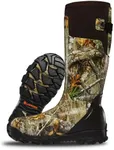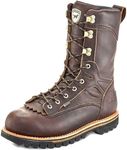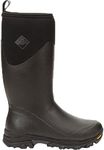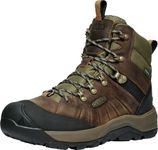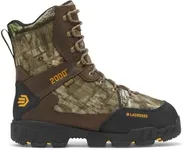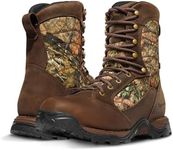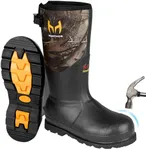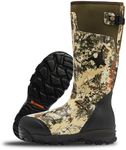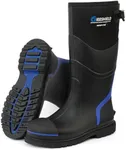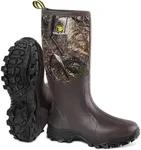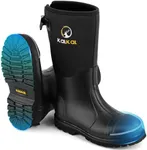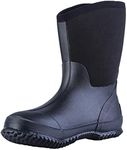Buying Guide for the Best Insulated Hunting Boots
When it comes to choosing the right insulated hunting boots, it's important to consider several key factors to ensure you stay warm, comfortable, and protected during your hunting trips. The right pair of boots can make a significant difference in your overall hunting experience, especially in harsh weather conditions. Here are some key specifications to consider when selecting insulated hunting boots and how to navigate them to find the best fit for your needs.InsulationInsulation in hunting boots is crucial for keeping your feet warm in cold weather. It is typically measured in grams, with higher numbers indicating more insulation. For mild weather, 200-400 grams of insulation may be sufficient. For colder conditions, 600-800 grams is a good middle ground, while extremely cold environments may require 1000 grams or more. Consider the typical weather conditions you'll be hunting in to determine the right level of insulation for you.
WaterproofingWaterproofing is essential to keep your feet dry in wet conditions, whether it's rain, snow, or crossing streams. Look for boots with waterproof membranes like Gore-Tex or other proprietary technologies. If you often hunt in wet environments, prioritize boots with reliable waterproofing to ensure comfort and prevent issues like blisters or frostbite.
MaterialThe material of the boots affects durability, weight, and breathability. Common materials include leather, synthetic fabrics, and rubber. Leather is durable and offers good protection but can be heavier. Synthetic materials are often lighter and more breathable but may not be as durable. Rubber boots are excellent for wet conditions but can be less breathable. Choose the material based on the terrain and conditions you typically hunt in.
Fit and ComfortA proper fit is essential for comfort and preventing blisters. Insulated hunting boots should have enough room to accommodate thick socks without being too tight. Consider trying on boots with the socks you plan to wear while hunting. Look for features like padded collars, cushioned insoles, and adjustable lacing systems to enhance comfort. Remember that a good fit can also improve your mobility and reduce fatigue during long hunts.
TractionTraction is important for maintaining stability on various terrains, including mud, snow, and rocky surfaces. Look for boots with aggressive tread patterns and durable outsoles made from materials like rubber or Vibram. If you hunt in icy or slippery conditions, consider boots with specialized traction features like ice grips or cleats. The right traction can help prevent slips and falls, ensuring your safety in the field.
HeightThe height of the boots can affect protection and mobility. Taller boots (8-10 inches) offer more protection against water, snow, and debris but can be heavier and less flexible. Shorter boots (6-8 inches) provide better mobility and are lighter but may offer less protection. Consider the type of terrain and conditions you hunt in to determine the appropriate height for your boots.

